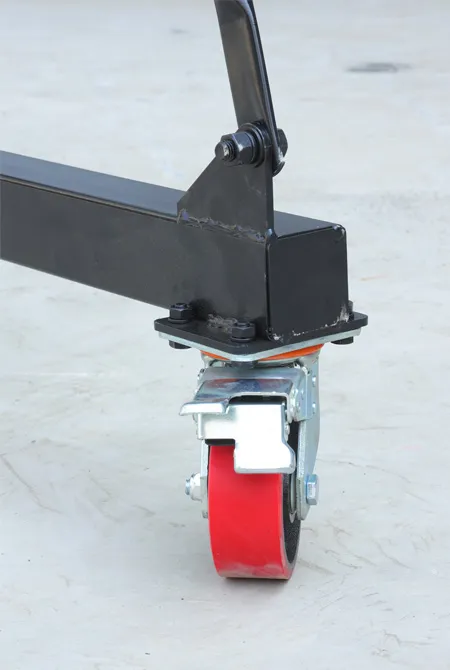gantry style crane
Understanding Gantry Style Cranes An Overview
Gantry style cranes play a pivotal role in various industries, providing efficient and versatile solutions for handling heavy loads. These cranes are characterized by their unique configuration, where the lifting mechanism operates from a structure that is supported by legs on either side, resembling a gantry. This design allows gantry cranes to traverse over a work area, making them ideal for outdoor applications and in environments where traditional overhead cranes may not be feasible.
Design and Functionality
The core structure of a gantry crane typically consists of a horizontal beam, or girder, supported by two vertical legs. These legs can be fixed or movable, depending on the requirements of the workspace. Gantry cranes are generally designed to carry one or multiple hoists that can lift and transport loads vertically. The structure is often made of steel or aluminum, ensuring both strength and durability.
One of the most significant advantages of a gantry crane is its ability to function in open spaces. Unlike traditional cranes anchored to a building, gantry cranes can operate outside, making them particularly useful in shipping yards, construction sites, and manufacturing plants. The mobility of the gantry allows it to easily move along a set path, which enhances its operational efficiency.
Applications in Various Industries
Gantry cranes are employed in a wide array of industries due to their versatility. In the construction sector, these cranes are often used for lifting heavy materials, such as steel beams and prefabricated structures, making the assembly process more efficient. In manufacturing settings, they facilitate the movement of large equipment and components, ensuring smooth workflow and reducing the need for manual lifting.
In shipping and logistics, gantry cranes are fundamental for loading and unloading containers from cargo ships. Their large span and lifting capacity make them perfect for managing heavy loads with precision, thereby improving turnaround times in ports. Additionally, in automotive manufacturing, gantry cranes are used for assembling vehicles and moving heavy engine parts.
gantry style crane

Advantages of Gantry Cranes
The advantages of gantry cranes are numerous. Firstly, they offer excellent lifting capacity, with some models capable of handling several tons of weight. This makes them suitable for heavy industry applications. Secondly, they are often more cost-effective than traditional cranes, particularly when it comes to installation and maintenance. Since gantry cranes do not require additional building infrastructure, they can be installed quickly and with minimal disruption.
Furthermore, the ability to easily relocate gantry cranes is a significant benefit. Organizations can adapt to changing needs by moving the crane to different locations as required, which is particularly advantageous in dynamic work environments.
Safety Considerations
While gantry cranes are incredibly useful, it is essential to prioritize safety during their operation. Ensuring that the crane is well-maintained and regularly inspected can prevent accidents caused by mechanical failure. Operators must also receive proper training to handle loads safely and follow established guidelines for lifting operations.
Implementing safety features such as limit switches, emergency stop buttons, and overload protection systems can further enhance the safety of gantry cranes in the workplace. Additionally, maintaining clear communication among team members during lifting operations is vital to preventing accidents.
Conclusion
In conclusion, gantry style cranes are essential tools in various industries, renowned for their efficiency and adaptability. Their unique design allows for ease of use in a range of applications, from construction to shipping. With the ability to handle heavy loads safely and effectively, gantry cranes continue to be an integral part of modern industrial operations. As industries evolve and demand for lifting solutions increases, the significance of gantry cranes will undoubtedly remain strong, paving the way for advancements in design and technology within this critical machinery sector.
-
Unlock Seamless Relocation with Our Heavy Equipment Moving ExpertiseNewsJun.06,2025
-
Unleash Unrivaled Flexibility with Our Adjustable Gantry CraneNewsJun.06,2025
-
Unleash Heavy-Duty Efficiency with Our Industrial Gantry Crane SolutionsNewsJun.06,2025
-
Revolutionize Steel Handling with Our Magnetic Lifter RangeNewsJun.06,2025
-
Master Equipment Mobility with Premium Machinery Mover SolutionsNewsJun.06,2025
-
Elevate Your Material Handling with Magnetic Lifter TechnologyNewsJun.06,2025
-
YS Permanent Lifting Magnets: The Smarter Way to Handle SteelNewsMay.22,2025
